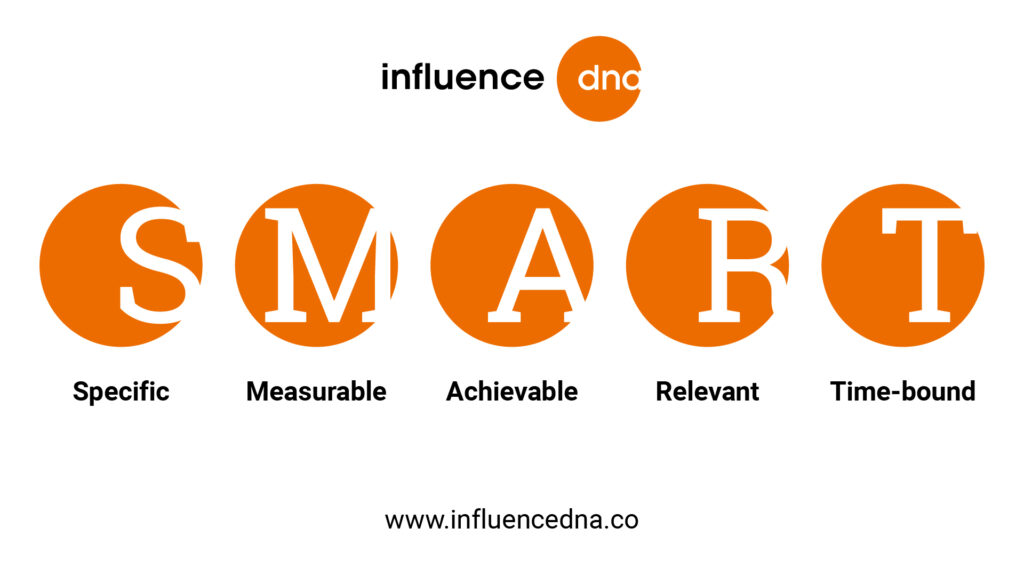How to Stick to a Plan
It’s the start of another year – for many that means a bit of breathing room to reflect on where things are going and where you’d like them to go. It’s also the most popular time to create new plans.
Whether it’s making plans for yourself, your family or your team, people usually go through the same cycle.
In late December and at the start of the year, we’re making amazing plans – we’ll be in the best shape of our lives, take on new adventures, get a promotion – we’ll be unstoppable!
But by the end of February, the gyms are empty and most of our plans have failed.
There’s a few reasons why 80% of the time people can’t stick to their plans, yet – if you don’t stick to your plan, you won’t achieve your vision.
The good news is that you can get better at sticking to a plan.
Read on and stick to reading this article to explore the five steps you need to take to make your plans a reality.
By failing to prepare, you are preparing to fail.
- Benjamin Franklin Tweet
Get Gritty
The first step to making your plans stick is the hardest but most important one and it starts before we even make a plan.
Sticking to a plan requires building daily habits that keep us away from distractions and inching toward the goal line.
Angela Duckworth recently made waves with her Ted Talk when she coined this tendency “grit.”
In a nutshell, grit is the ability to hold onto a purpose even if you fall down, make mistakes or progress slows to a crawl.
You can do a test to find out how gritty you are.
The good news is, you can get grittier. We can improve grit by doing things we enjoy, having a purpose to follow in that work, believing in your ability to overcome adversity and conducting deliberate practice.
Praise is a motivator
To tackle your ability to overcome adversity, you need to get to know your derailers.
You need to get to know the thought patterns that take you away from your goal and reframe them with a little cognitive-behavior psychology.
One of the most common pitfalls is all-or-nothing thinking. That kind of thinking leads to just giving up on the plan entirely when you hit a snag. That’s not being gritty.
In fact, gritty thinking is – I’m human, sometimes I make mistakes and that’s okay.
Acknowledge a slip or failure (even appreciate them if you can) and recommit to the path – life is all about balance.
The other aspects of increasing grit – having a purpose to follow, conducting deliberate practice, and doing things we enjoy – are all tackled in the other four steps of sticking to a plan.
The Best Plans Start by Crafting a Vision
When it comes to sticking to a plan, if you really want to stay on track, you, and the people you are leading down the path, need to see a vivid image of the goal. That means having a vision of your ideal state, a raison d’être that you can all rally around when things get tough.
Let’s face the hard truth – If you are doing work that strongly disagrees with your core values, you will never succeed.
Why? Because even if you win at work, you lose yourself.
Having a vision that ties to your core values, or the core values of your team, will make you more likely to achieve your goals. It’s because this kind of goal strikes at the very essence of who you are and who you want to be and how you want to feel, rather than being a checkbox to be ticked.
In fact, research published in The Proceedings of the National Academy of Sciences proved this by studying how calling people “a voter” raised actual turnout in state elections over using the verb “voting”.
Let’s take an example goal – getting promoted.
Getting promoted relies on more than your own performance, there are office politics, budgets, the economy – all sorts of external factors that can get in the way.
But, for example, if the reason for the promotion is financial, you could shift to a vision of the lifestyle you want those finances to support instead of simply increasing the paycheck. By doing that, a whole variety of avenues to achieving your goal open themselves up and you will be put fully in the driver seat of which ones you want to travel to make your vision a reality.
You’ll shift from an external to an internal locus of control, building self-control and discipline.
When you have a vision that’s tied to your core values – you have a plan worth following.
The Best Plans have SMART Goals
By now you’ve probably heard of SMART goals – goals that are Specific, Measurable, Achievable, Realistic and Time-bound. These are going to be the actions you take along your path to achieving your vision and this is where your plan needs to get specific.
You need to look at the path from here to there and break it into small, bite-sized chunks. It’s not possible for people to follow a huge list of priorities at the same time, so stick to around four at a time.
Afterall, if you have a million priorities, are any of them really the priority anymore?
Now turn these into SMART goals by:
- Coming up with up to three specific things you can do to achieve them.
- Checking that the actions are realistic and achievable.
- Identifying how you’ll track your progress – you’ll measure this each day to make sure you’re progressing.
- Putting a time limit on it – Make sure you are focussed on a specific date to complete the micro-goal.
Now that you have your SMART micro-goals in place, start taking action and measure your progress every day.
Even if you aren’t taking a specific action that day, take a minute to look at them every day alongside a statement of your vision. Before long they will become like a mantra and be constantly reinforced so you don’t fall off track.

Creating new habits: Time to be accountable
You’ve made it to the last step to sticking to a plan – congratulations! Actually – the last step is all about congratulations.
You see, human brains still use a lot of our evolutionary wiring from way back in our hunter and gatherer days. Our brains use something called the dopaminergic reward system to remember things that made us feel good and pair them up with that good feeling to reinforce repeating it later.
When it comes to sticking to our plans – if there is something we are failing at doing, it might be because we don’t see value in it. We need to figure out where the lack of value is and modulate it.
So how do we do that? Temptation bundling. We pair something we want to do with something we have to do. Maybe you have a monthly latte habit that leaves you feeling like a new person. Great – make it a reward you get only when you complete your monthly report. See how that works? Soon you’ll be frothing at the mouth to get those tasks done (that’s a coffee pun).
The part of our brain that gets worn down with constantly putting in effort to achieve hard things, our executive function, can be short circuited. A little periodic rest and variety of positive experiences will stop us from getting too mentally exhausted to continue.
Sticking to your plan for the long-haul means celebrating small wins. By recognizing every small step you make towards your vision, you’ll be recharging that executive function and getting excited about the next step.
So make it a habit to celebrate your wins and sure enough your wins will become a habit.
You can have Your Plan and Eat Cake Too!
This year when you join the nearly 200 million Americans who make New Years resolutions, use the five steps you just learned to make sure you’re part of the 20% whose plans stick.
By following these five steps you can turn your vision into a reality:
- Getting gritty – by doing things you enjoy, finding purpose in your work, believing in your ability to overcome adversity, and conducting deliberate practice, you can get gritty and learn to get back up over and over until you achieve our goals.
- Making it a vision not a task – plans that are visions of our ideal state based on our core values are plans that are worth following. You’ll have more ways to win and more reasons to get back up if you don’t.
- Breaking your vision into SMART Goals – Rome wasn’t built in a day, it was built brick by brick. Your plan should be the same way – break it into a few priorities at a time and identify specific, measurable, achievable, realistic and time bound goals that will help you achieve those priorities.
- Staying accountable – Check in with your vision and progress every day. Better yet – get an accountability partner and hold each other accountable to sticking to your plans.
- Celebrating your wins – Stop fatigue in its tracks and keep your motivation high by taking time to celebrate each small step towards your vision.
Now you’re ready to create a plan that sticks – get out there and start crafting and sharing your vision.
Do you need help finding your vision or want to learn more about accountability?
Contact me here, or send me a DM on LinkedIn.





